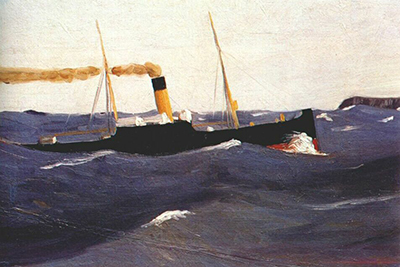Hopper focused predominantly on the quieter moments of everyday life, isolating figures and subjects against a landscape. Hopper remains highly influential in American popular culture, being named as inspiration for many artists, writers, photographers and filmmakers.
In the art world, Hopper has been significantly important in the development of American art in the twentieth-century, particularly its personal and introspective representation of solitude in modern American life.
Hopper achieved his greatest successes from the 1920s onward, when he met his future wife and artist Josephine Nivison. Nivison became Hopper's publicist, estate manager and promoter, establishing noted showings, sales and exhibitions of Hopper's work which kickstarted his late career.
Always well constructed by diagonal lines, shapes and colour, Hopper typically depicted subjects lit by blanching dramatic light, with pronounced shadows and evocative, distant angles isolating his subjects. Among Hopper's most iconic visual subjects was his exaggeration of quiet spaces by isolating figures; this gave his paintings an inherent melancholia. Hopper's Tramp Steamer departs from his usual human subject, but draws instead on an isolated steamship.
Tramp Steamer was painted relatively early in Hopper's career, being completed in 1908 when Hopper was twenty-six years old. Painted upon returning from an inspirational trip to Paris, his Tramp Steamer incorporated many of the stylistic flourishes Hopper admired in Paris, particularly the brushstroke of Impressionist painting.
The steamer itself was painted from memory, depicting a British ship he had observed in the English Channel. Hopper exhibited this painting with others that drew on transport, including a railroad train, tugboat and train station.
Although painted at the very beginning of Hopper's artistic career as a self-declared student, Tramp Steamer does give an indication of his blossoming style; the isolated movement, muted palette and careful framing are all concerns Hopper carried with him. It was, however, an experiment that did not pay off.
With interest growing in America to foster a "national" art style, Hopper had turned to nondescript transport as a symbol of modernity. The ship, of course, was not American but British, belying his aims to garner a reputation in America.




